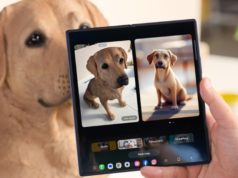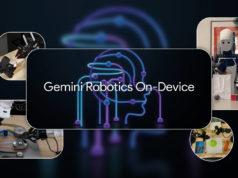
- Register
- Login
31°C
- Article
- . (0)
- Related content
Corning in late July released its latest cover glass, Gorilla Glass 5, to provide better protection for mobile devices against breakage from everyday drops. in early August, Samsung Electronics unveiled Galaxy Note 7, the vendor’s new flagship smartphone featuring Gorilla Glass 5 as its cover glass.
Digitimes recently talked to James E Hollis, director, Sales and Applications Engineering, Gorilla Glass Specialty Materials, Corning, about the new cover glass and how the company works with its clients.
Q: People have been talking about a shift of the supply chain from Taiwan to China. For example, one third of the panels are now coming from China. How does Corning see such a shift?
A: I can’t speak for the display business. But Corning’s regional headquarters is in Taiwan. I think if you look at the Gorilla Glass value chain, it depends on which step of the value chain you are talking about. There are some glass finishers in Taiwan, some in Korea, but for the most part they are in China. If you talk about the touch panel module (TP), companies like TPK run their manufacturing in China, but their headquarters or R&D may be in Taiwan. But there are a large number of OEMs in China; there is a lot of operational work there. So we do a lot of transactional work and technical support work in China, as the glass flows through the value chain.
Q: How do you support your clients in designing their products? How close is your relationship with them?
A: It’s really determined by how close they want to be. Various OEMS have different cultures that determine how close or open they can be. We understand and respect the fact that our customers want to protect their design and IP as well.
If a company comes to us and say they want to make a smartphone, and ask for help about glass, we can start from the basics. They may bring in their design team, mechanical team and R&D team. They may spend a week with us and may come in three or four times a year to go through all the basics about glass – processing, reliability and what makes glass fail. We do a combination of what’s like classroom work. We also arrange them to go to our labs, talk to our engineers and see demos. If they want to get that close, we’ll teach them.
They may want to do certain things with a design. Then we’ll work with them on what we call design rules. We can present to them what we think is the best glass. We can explain why it is the best, what makes glass reliable, and what type of damage may occur.
But in some cases, customers may not want to be that close. Maybe they just want to buy the material; it’s really up to the customers. We have a range of customers that come to us very early in the design phase, and we have customers that come to us midway, and some customers with basic interaction.
Q: What happens when Gorilla Glass on clients’ devices do break?
A: What we can control is the mechanical performance and capability of the glass. What we emphasize is that the glass itself should be every bit damage resistant and impact resistant whether it is a 2D or 2.5D design. But how that device is going to perform is going to depend a lot on not only the cover glass design, but also the device design, and how well it is processed at the glass finisher.
One of the things we do during the design cycle and even after the product is in the marketplace is that we provide diagnosis services. If the customer brings us a device that is broken, we start from the very basic, double check the composition to make sure it’s really our glass. Then we look through the patterns of what happened, and determine what type of force was levied on that particular place that we call the fracture origin, and what subsequently happened. We can feed that information back to the OEM about the design. Sometimes we’ll find something in the makeup of the phone, such as a screw, that applies local stress and causes certain effects when the phone bends. We help with the diagnosis of the after-effect as well during the design.
Q: Is the original Gorilla Glass still in production?
A: The original Gorilla glass is no longer in production. But there’s still a little bit of inventory in various parts of the value chain. We launched Gorilla 2 basically to replace the original Gorilla. When we launched Gorilla 3, it basically replaced Gorilla 2 and we phased out the production of Gorilla 2. When we did Gorilla 4, we did feel there would be a natural segmentation of Gorilla Glass, at least initially. We did not phase out Gorilla 3.
So naturally at the beginning, Gorilla 4 was all premium. The middle and lower segments would use Gorilla 3. What’s happened over time is that in that middle segment we’ve seen a little more proliferation of Gorilla 4, down below the premium into the middle segment. And we see a lot of Gorilla 3 used in the midrange and low-end segments. It’s not our plan to phase out Gorilla 3 or Gorilla 4. For Gorilla 5, the OEMs, based on their segmentation strategy, will have the chance to decide what they use.
Q: Currently, what’s the proportion of production for Gorilla 3 and Gorilla 4?
A: I can’t tell you the exact proportion. What I can tell you is that we’ve produced more Gorilla 3 and provided more Gorilla 3 in the marketplace than any of our other Gorilla Glass combined. When you think about Gorilla 4, 20 to 25 OEMs have incorporated it into their primarily high-end devices. It has also proliferated a little bit into the medium levels.
Q: So Gorilla 5 is going to be a challenge for Gorilla 4, not really for Gorilla 3? I don’t suppose there will be a huge price difference between Gorilla 5 and Gorilla 4.
A: I think we have to wait and see how the market is going to choose and decide for us. When you get to the device level, the price difference will be probably rather insignificant. So it’s a question of ‘Why not use Gorilla 5?’ It really depends on the strategy of the device maker and the segmentation of their products.
Q: Can you talk about Gorilla Glass’ extension, the Vibrant that allows vendors to print their designs on the cover glass? How are vendors responding to it?
A: We already saw one, the Acer Hello Kitty limited edition notebook, today (at a demo at Corning’s lab in Silicon Valley). For glass as a design element on the back of phones, we feel that there’s going to be a growing cycle of that to come back at some point. We’re giving OEMs design options to potentially decorate their devices. We have a special printing technology and special ink that makes it very reliable to print it on glass. We’re going to see more Vibrant designs on the market this year.
Q: Acer’s Hello Kitty notebook is a limited edition of 500 units. It’s obviously meant to be a promotion for both Acer and Corning. For other vendors, will Corning accept a small order volume for just 500 pieces of glass?
A: What’s interesting about Vibrant is we are actually the producer of the part. We do provide the finished parts ourselves. Based on our relationships with our customers we’ll certainly work with them on whether it’s a promotional device or whether it’s for mass production. You’re going to see Vibrant on mainstream IT devices later this year.
There will be more adoption this year. All of our OEM customers have been exposed to Vibrant, and many are investigating or considering how it might or might not fit their roadmaps. It’s really still early to tell how niche or how broad that’s going to be. The OEMs will decide where they want to go in the next three or four years, and they have to decide whether Vibrant fits their roadmaps or not. But we’re happy and Acer’s happy with the result we’ve got – the Hello Kitty device was sold out in a day. Later in the year you’ll see Vibrant on mainstream devices.
Q: The consumer electronics market is becoming mature, and Corning is apparently also looking to diversify the application of Gorilla Glass. We’ve seen carmakers adopt Gorilla on their windshields. What’s the prospect of Gorilla in the automotive industry?
A: The play for Gorilla is both in the exterior and interior of a car. Every indication we have is that the displays are going to continue to…








